Superfact 1 : The Earth Is Billions Of Years Old
The scientific evidence overwhelmingly show that Earth is billions of years old. There is no credible scientific evidence for a young Earth.
This is the second post on my super-factful blog. As I mentioned in my first post the goal of this blog is to create a long list of facts that are important and known to be true yet are either disputed by large segments of the public or highly surprising or misunderstood by many. These facts are not trivia, they are accepted as true by the experts in the relevant fields, the evidence that the fact is true is impressive, and they are important to the way we view the world and to what we believe, and yet they are hard pills to swallow for many. They are not scientific theories or complicated insights but facts that can be stated simply.
In lack of a better term, I am referring to these facts as “super facts” and so far, I’ve made a list of more than a hundred. In addition to just stating the fact I will explain why we know that it is true and discuss the evidence, give background information and provide links. However, my posts will not be deep dives into the topics in question. I will try to remember to suggest resources for further study. I am open to suggestions for super facts as well as challenges to super facts I’ve posted, or other things I written that someone may disagree with. In fact, I would find that helpful, as long as we can discuss the issue in good faith and keep it friendly.

My first super fact, which is this post, is “We Know That the Earth is Billions of Years Old”. To some this may seem trivial whilst others dispute it. The scientific community states that Earth is 4.5 billion years old and that humans evolved over millions of years. This is not in dispute among the scientists / experts in the relevant fields, and yet a lot of non-scientists do not believe this. A 2019 Gallup poll showed that 40% of US adults believe that God created humans in their current form within the last 10,000 years. Therefore, I think this is a good example of a super fact.
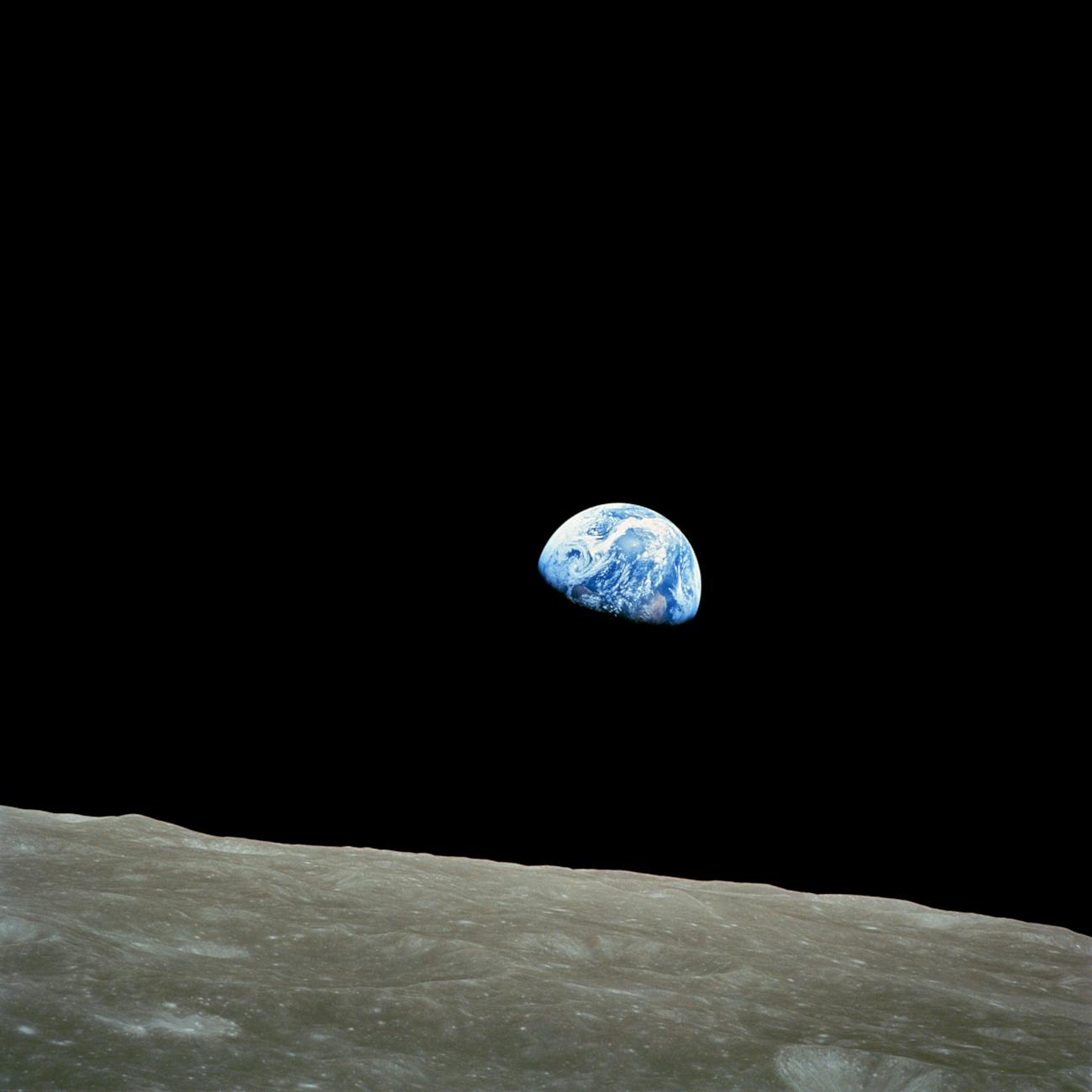
Older Beliefs
As a teenager I believed that Earth was 6,000 years old. That was before I knew much about science. I had read agenda driven books that left out, or wrongfully dismissed the evidence for an old earth while presenting faulty arguments for a young earth. Just learning about the relevant science was enough for me to realize that I had been bamboozled. At first, I dug my heels in, but I eventually realized that the belief that earth was 6,000 years old was not tenable and unsupportable by science.
If I had known and understood any of what I am posting in this post when I was 14 years old, I don’t think I would have been bamboozled by the young earth creationist books. However, I can add it was not the only time I was bamboozled. I am hoping my blog will lead to some new insights and good reflection including for myself.

“Old Earth” Vs “Young Earth”
Below I am first presenting some evidence for “old earth” and then some arguments, or faulty evidence, for “young earth”.

Radiometric dating of meteorite material, terrestrial material and lunar samples demonstrate that earth is 4.5 billion years, or more precisely 4.54 billion years old.
The various measurements include radiometric dating of rocks and crystals and meteorites found in the earth’s crust as well as moon rocks. There are a number of radiometric dating methods, not just carbon-14.
For example, comparisons of the abundance of carbon-12 and carbon-13 has been used to established that the increase of carbon dioxide in the atmosphere comes from burning fossil fuels, not another source of carbon. Radiometric dating methods use the relative abundance of radioactive isotopes in materials. For example, I-129 (Iodine 129) decays to X-129 (Xenon 129) with a half-life of 16 million years. So, if only a quarter of the original amount of I-129 remains you know that corresponds to 32 million years.
There are a lot of other radioactive isotopes with a wide range of half-lives that can be used for radiometric dating, including uranium-lead dating (U-235, U-238, Pb-206, Pb-207), Samarium–neodymium dating, Potassium–argon dating, Rubidium–strontium dating, Uranium–thorium dating, Chlorine-36 dating, Argon–argon dating, Iodine–xenon dating (I-129 – Xe-129), Lanthanum–barium dating, Lead–lead dating, Hafnium–tungsten dating, Oxygen-Oxygen dating (Isotopes O-16, O-17, O-18), Potassium–calcium dating, Rhenium–osmium dating, Uranium–uranium dating, Krypton–krypton dating, Beryllium dating (Be-10 Be-9), and many others as well the mixing of dating methods.
These dating methods use radioactive decay to establish age, and the various isotopes mentioned have half-lives from a few thousand years to billion years.
There are also dating methods that do not use the relative abundance of radioactive isotopes to establish age. In fission track dating you count the “track” markings left in it by the spontaneous fission of , for example, uranium-238 impurities. In this case you don’t need to know the initial abundance of the radioactive isotope.
In luminescence dating methods you don’t even rely on radioactive isotopes but the effect that background radiation has had on materials. Stratigraphy, or stratigraphic dating, is a relative dating method that uses layers of sediment, rock, debris, and other materials to date events.
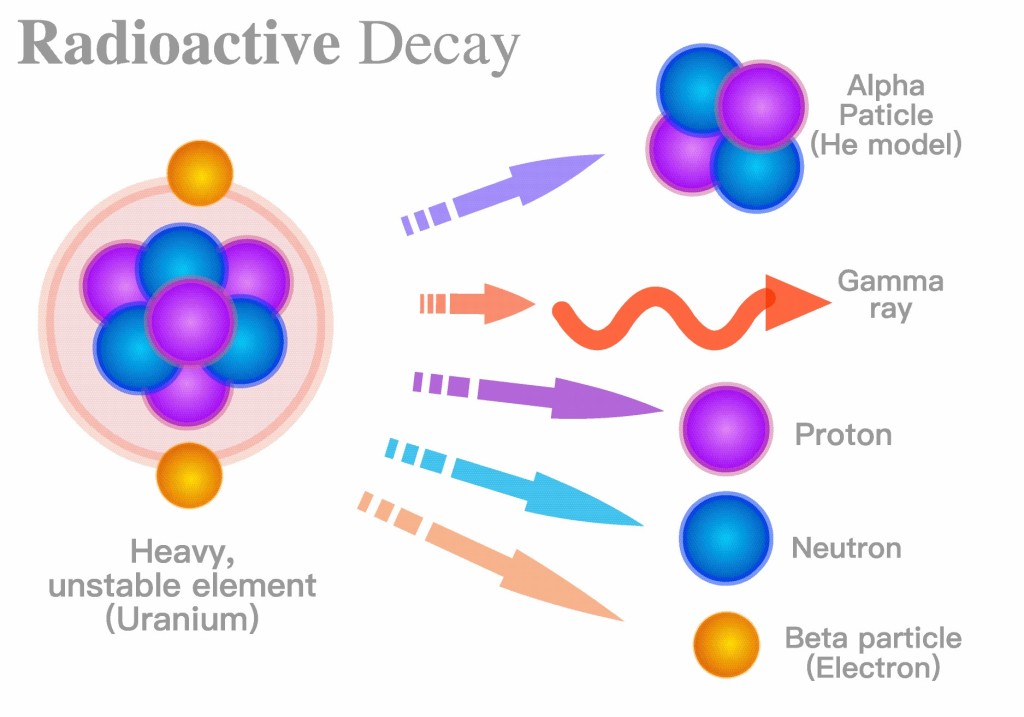
We can see galaxies that are billions of lightyears away.
This does not establish the age of the earth, but young earth creationists typically also believe in a young universe. In addition, an old universe makes a young earth implausible.

We know stars are old because they develop according to certain physical processes.
These physical processes give different stars different lifespans. You can establish the age of a star by determining where it is along its development. An example is our sun. It has fused (burned up) up around five billion years’ worth of hydrogen, so we know it is around five billion years old.
The heavier elements in our solar system originate with older stars that burned out and exploded.
Our solar system, the earth and our bodies contain many kinds of elements heavier than iron. However, elements above iron in the periodic table cannot be formed in the normal nuclear fusion processes in stars. But they can be formed when massive stars die in a supernova explosion or when neutron stars (dead stars) collide. A massive star living, dying, exploding in a supernova, and after that the heavy elements are spread all the way to our solar system, is not a process that can take only 6,000 years. It’s millions and billions of years. It is also interesting to note that this means that parts of our body consist of materials originating in faraway dead stars. We are stardust.
Electromagnetic radiation, including light, and heat transfer, travels from the inside of the sun to the surface and this process takes 100,000 years.
The photons are emitted and reabsorbed over and over, which is a relatively slow process inside the side. If the solar system, the earth, the sun, etc., is only 6,000 years old, how can we see the sun?
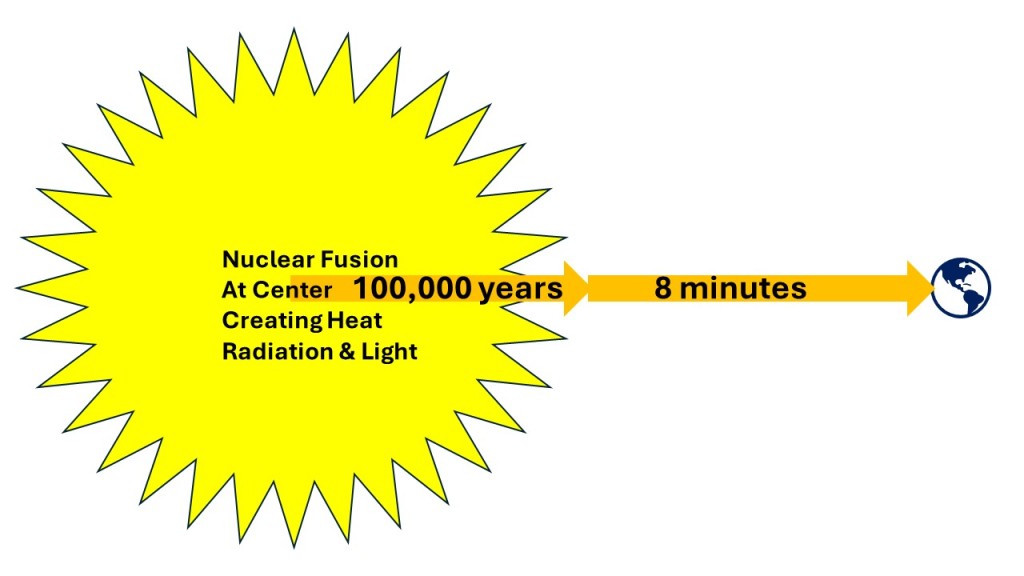
Finally, some young earth arguments

Radioactive decay rates have changed drastically (No!)
First, this is an ad hoc argument that lacks evidence. Secondly this claim cannot work. The rates of radiometric decay (the ones relevant to radiometric dating) are a result of fundamental physical properties of matter, such as the probability per unit time that a certain particle can “tunnel” out of the nucleus of the atom.
You can’t change fundamental physical properties without destroying physics and how atoms work. The claim is also contrary to empirical evidence. For example, analysis of spectra from quasars show that the fine structure constant has not changed over the last ten billion years.
Another problem with this argument is that for a young earth you would need the decay rates to have been millions of times faster in the past, which would require changes in fundamental properties that would have plenty of noticeable effects on processes other than radioactive decay, not to mention the radiation being millions of times stronger than today. That’s a lot of radiation for Adam and Eve to survive. It would have fried everything.
In addition it is also a mystery how the dozens of different radiometric dating methods could have remained consistent with each other throughout time and add the fact that there are dating methods that do not rely on the decay rate of isotopes.
Young earth creationists sometimes make the claim that the initial ratios between isotopes may have been different.
That the initial ratios/condition were different in the past and therefore radiometric dating is unreliable is a better argument, but it also fails. In this case you must take it case by case for each radiometric dating method and situation. There are some rare cases of mistaken assumptions but there are also cases where the amount of the daughter isotope is known to have been zero, which makes it easy and reliable.
The speed of light in vacuum has changed throughout history (No!)
Similar to the situation above, this objection does not work because the light speed in vacuum is a fundamental constant that is not believed to change, and it would be very strange if it could change. It has been measured and no change has been seen. An example is the Einstein’s equivalence of energy and mass E = mc2. If the speed of light once was millions of times faster than now, the energy contained in a kilogram would be a trillion times larger than now. Where did all that energy go?
Another example, from electromagnetic theory the speed of light is determined by the inverse of the square root of the electric constant multiplied by the magnetic constant (see below). You would have to drastically change the strength of the electric and magnetic fields (by the trillions) to get the speed of light to be millions of times faster. If you for example made the electric field a trillion times weaker how would atoms hold together?
Yet another example, Planck’s law features the speed of light in vacuum constant. In physics, Planck’s law describes the spectral density of electromagnetic radiation emitted by a black body in thermal equilibrium at a given temperature T, when there is no net flow of matter or energy between the body and its environment. Changing the speed of light in vacuum would turn light into very slow microwaves. How would Adam and Eve be able to see? Not to mention that the proportionality constant on the right-hand side of Einstein’s field equations has the speed of light in it. Gravity would essentially disappear. The light speed in vacuum shows up in many other physical relations as well.
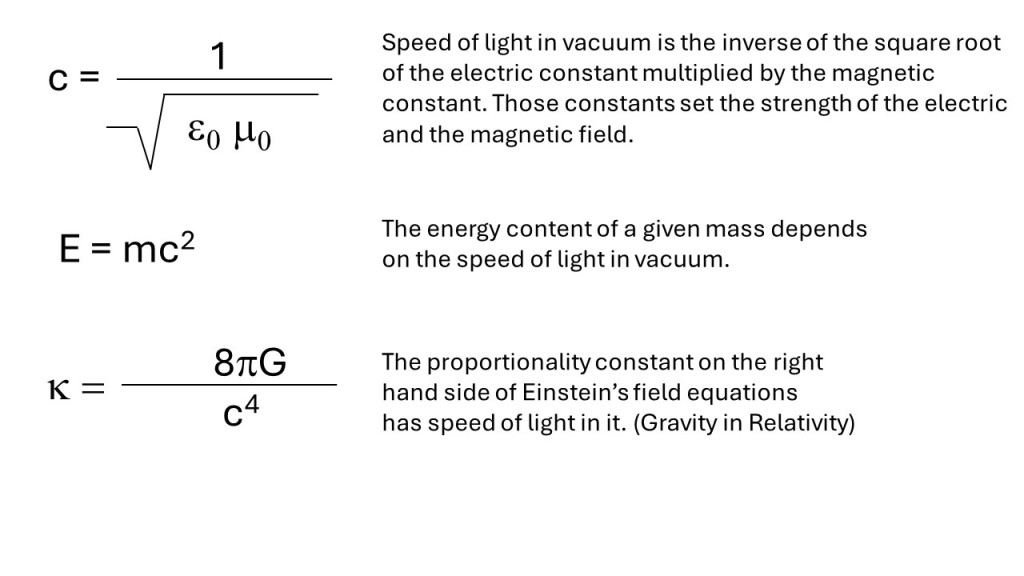
The earth’s magnetic field has been weakening during the last 130 years as if it was formed from currents resulting from earth being a discharging capacitor (claim by Thomas Barnes). This would make an impossibly strong magnetic field already 8,000 years ago.
I remember this being one of the arguments in a young earth creationist book that I read as a teenager. However, there are a number of problems with this claim.
- The first problem with this argument is that there is no good reason to believe that earth’s magnetic field acts this way. It does not act like a discharging capacitor.
- We know that earth’s magnetic field has reversed itself several times thus disproving the discharging capacitor model.
- Thomas Barnes’ extrapolation completely ignores the nondipole component of the field.
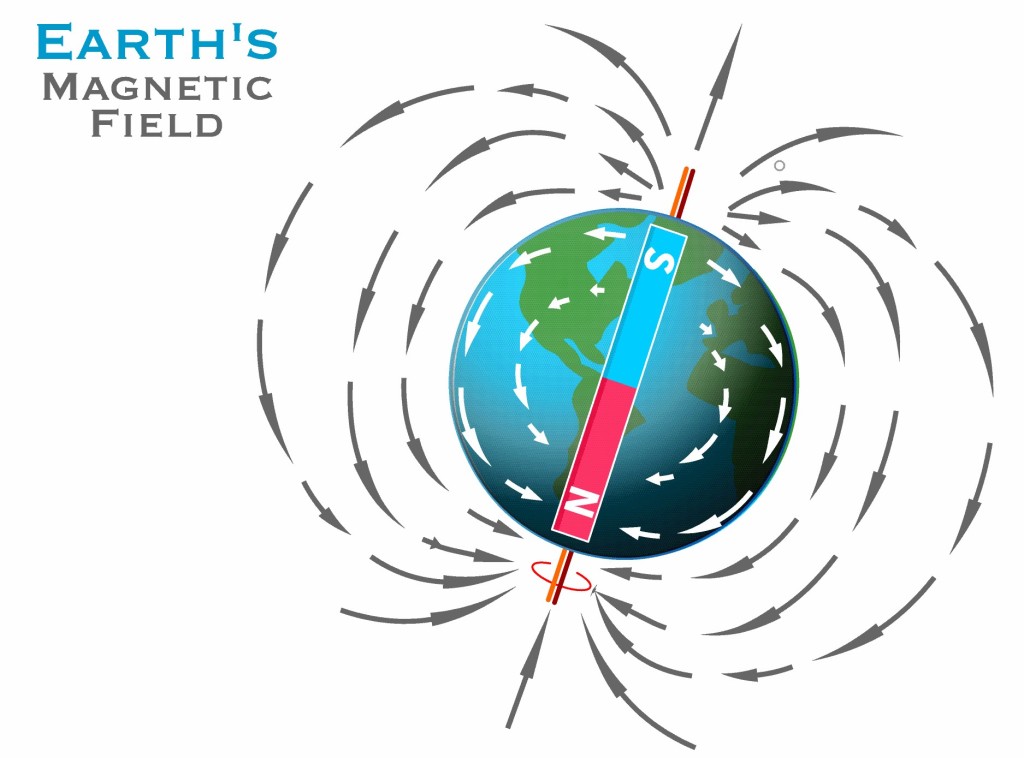
If the earth and the moon were billions of years old there would be a hundred feet thick dust layer from meteorites on the moon. The moon landing proved otherwise.
This is yet another argument I remember reading in a young earth creationist book (Scientific Creationism by Henry Morris) as a teenager. The problem with this argument, as I would later find out, is that Morris’ claims about a hundred feet thick dust layer was based on faulty and obsolete data. The expected depth of meteoritic dust on the Moon is less than one foot (after billions of years).
An old earth would be covered by 182 feet of meteoric dust.
This is another claim that I remember from Henry Morris’ book. The observed rates used in Morris’s calculations are based on dust collected in atmosphere; this measurement was contaminated by dust from the earth. More recent measurements of cosmic dust influx measured from satellites give an influx rate of about 1% as large, corresponding to a 66 centimeter at most thick over 4.5 billion years.
Basically, the evidence for an old earth is very compelling whilst young earth objections to that evidence fails, and young earth arguments tend to fail. At least I am not aware of any valid young earth argument. In addition, based on my readings of young earth creationist books, these books tend to be conspiratorial in nature and making implausible claims about scientific community having certain agendas. There is a reason the young earth view is nearly universally rejected by the relevant scientists.
Conclusion
My conclusion is that the fact that we know that the Earth is Billions of Years Old is a super fact. We know it’s true, it is important, and yet large portions of the public reject that fact.


The journey of heavier elements from ancient, dying stars to our own bodies is an incredible proof of the vastness of time and space. The idea that we are made of stardust, forged in the fiery deaths of distant stars, is both humbling and awe-inspiring. This cosmic recycling, taking millions to billions of years, underscores the implausibility of a young universe, especially when considering the prolonged processes, like the photon journey within the sun, that define our cosmic environment. It’s a beautiful reminder of our connection to the universe, written in the atoms that compose us. The small print 🙂
LikeLiked by 2 people
Yes you are right and you put it very eloquently and beautifully. I like this powerful statement “The idea that we are made of stardust, forged in the fiery deaths of distant stars, is both humbling and awe-inspiring.” You summarized it all very well. Again thank you for your comment. It seems I have a little comment problem I need to fix. All comments need to be approved and I don’t know how to turn that off.
LikeLike
By the way, the proper credit for the “Earthrise” photo (which was taken in December 1968 during the Apollo 8 circumlunar mission) should include astronaut Bill Anders’ name and that it was published by NASA.
LikeLiked by 1 person
I just accepted the credits as given by pexels but I updated the credits now. Thank you Alex.
LikeLike
Incredible. Thank you, Thomas. The recent findings in the Grand Canyon point to life beyond the standard narrative. I wish I were younger and had the skills to descend into this amazing formation, which is only a couple of hours from where I live.
LikeLiked by 1 person
I’ve visited Grand Canyon a few times, south rim and north rim. It is a truly amazing sight. Lucky you, to live so close. Like you say it is also a very interesting place for scientists of various kinds.
LikeLiked by 1 person
Just like the Sadducees, you neither understand the scriptures nor the power of God, just as in Matthew 22:29. God is above the laws of physics. He is outside of the laws of physics. He can bend the laws of physics to his will. He can change the speed of light as he will. Consider the power of miracles.
Is changing the speed of light without changing the mass-energy equivalence like “creating a rock too heavy for him to lift” or “creating a square circle.”
but I have a solution to reconcile the Genesis account of creation with modern science. It’s somewhat similar to the solution by Hugh Ross “Reasons to Believe” where he suggests there are 11 dimensions. But my solution is that believe that the Genesis Creation Narrative takes place in another plane of existence, where man is form from the dust and all people are descended from a single couple, and all animals are created according to their kind. But after sin happened, men and women were cursed to be incarnated in this world where we are living in right now, where all life is a product of evolution and we are separated from apes. This incarnation is a curse of sin.
Have you ever heard of Swedenborg? Recommended resource: https://leewoof.org/2012/09/25/can-we-really-believe-the-bible/
LikeLiked by 1 person
World Questioner, thank you for your comment and kind words, like you said, “speed of light without changing the mass-energy equivalence is like “creating a rock too heavy for him to lift” or “creating a square circle.” It kind of is. The speed of light in vacuum is an integral part of the physical laws. In a previous comment you mentioned permittivity of free space and permeability of free space, and as I pointed out the speed of light in vacuum is the inverse of the square root of the electric constant (permittivity of free space) multiplied magnetic constant (permeability of free space) from Maxwell’s equations. If you drastically change the speed of light in vacuum (we are talking about the time long after the Big Bang, with formed stars and galaxies), which you would need to do to make it travel a billion light years in only a thousand years you would also drastically change the permittivity of free space or the permeability of free space making everything fall apart. You could say that the light speed in vacuum could maybe not be these constants anymore, but then it would not be light anymore, would it? In this blog I am focusing on physical evidence not religious speculation and yes, I know about Swedenborg, but I don’t know your religion.
LikeLike
I always thought that E=MC2 was about how an object slows down acceleration as it approaches the speed of light, how energy approaches infinity as it approaches the speed of light. I always thought that “E” in that equation referred to an energy of a moving object, and that “M” referred to the mass of a moving object, and that “C2” was a misnomer because it referred not to the speed of light, but an object’s velocity in relation to the speed of light. Like E=MV2, except that as V approaches the speed of light, the acceleration slows down and the object’s energy reaches infinity.
I didn’t know that the speed of light was the same for all observers until like 2017 or 2018. I was already an adult before then.
I didn’t know that faster-than-light travel would break causality until a year or two ago.
I read about the relativity of simultaneity in 2017 or 2018, but I kind of ignored it because I didn’t understand it.
LikeLiked by 1 person
About E = mc^2, it is kind of correct what you say, but not exactly. The mass increase as you approach the speed of light, making it harder to accelerate (this is viewed from another observer). However, c is indeed the speed of light in vacuum, the universal constant c = 299,792,458 meters per second, which also happens to be the speed of the object’s velocity in relation to the speed of light as viewed from that object, but note, other observers will measure a different velocity of the object in relation to the speed of light (relativity). So in summary, the c is indeed c = 299,792,458 and is always the same (in this formula). The E is the energy content of the mass. Notice, when I am talking about the speed of light as a universal constant, I am referring to c = 299,792,458 for all observers (right now), and this we have measured very carefully thousands of times.
However, this post is in a different context (not light speed being a universal constant). Here I was talking about what would happen if you changed this constant drastically through time to make it possible for us to see galaxies billions of light years away after just a few thousand years. The energy of all mass in the universe according to E = mc^2 (99.99999999999% of it) would have to disappear, which would violate physical laws, and it is just one of the many laws of physics (electromagnetism, nucleus, atoms, etc.) that you would break. The argument was that changing the speed of light constant would break all of physics drastically. We would have a completely different universe in the past and we see observe none of that.
LikeLike
Mass is simply resistance to change in velocity or direction, right?
LikeLiked by 1 person
I once thought that in E=mc2, the c2 was just a shorthand for v/(c-v) or v2/(c-v) or v2(c2-v2), or whatever is the best equation. If v = c, then c-v equals zero, and v divided by zero equals infinity, so it would take an infinite amount of energy for a non-zero-mass object to reach the speed of light.
Would the equation thereby be E=m(v/(c-v)),E=m(v2/(c-m)), E=m(v2/(c2-v2)), or would it be E=mv/(c-v), E=mv2/(c-v), or E=mv2/(c2-v2)? That’s what I thought E=mc2 meant. Something like one of those equations.
LikeLiked by 1 person
In response to : “Mass is simply resistance to change in velocity or direction, right?”
Yes and special relativity also showed that it is energy (in the form of mass)
LikeLike
c = 299,792,458 meters per second for all observers regardless of their motion. That’s why c is a universal constant. So essentially E = m^c2 is just a unit conversion. In other words energy and mass are equivalent. This is coming from special relativity.
LikeLike
Do you have any idea what I’m trying to come across? Turns out the equation I’m looking for is E=γmc2, where γ (gamma) equals \[ \gamma = \frac{1}{\sqrt{1 – \frac{v2}{c2}}} \]. For a long time I thought that E=mc2 was about relativistic energy of a moving object, not the mass-energy equivalence. I thought E=mc2 was just a misleading shorthand for E=γmc2.
LikeLiked by 1 person
OK E=γmc2 is also correct, assuming m is not the total mass but the rest mass, often denoted m0, so E=γm0c2. Basically, m = γm0. If a cannon ball weighs one kilogram and you speed it up to a very high speed so that it weighs 2 kilogram (γ = 2) m = γm0 = 2m0 = 2 kilogram, then you added 1 kilogram of mass and energy by speeding up thee cannon ball.
LikeLike
What about the idea that God placed evidence for evolution to test our faith in the Genesis Creation Narrative? That Australopithecines, ape-men, and feathered dinosaurs were created as fossils and never lived?
LikeLiked by 1 person
World Questioner, thank you for your suggestion. Outside of logic and mathematics nothing is 100%. However, the problem is that you could also say that God placed everything in the world before yesterday to test our faith, including our memories. The world has only existed for one day. We live like in the movie the Matrix. If you think that way you would have nothing but blind faith. In my blog(s) I focus on actual evidence.
LikeLike
My proposed means of reconciling the Genesis Creation Narrative and modern science, is that creation and evolution occurred in different planes of existence. Different realms or dimensions.
In the other realm, Adam was formed from the dust, and Eve from his rib, all people were descended from that couple, and each animal reproduced after their kind. But after the fall of sin, mankind was cursed to be incarnated in this world where we are living right now, where all life is a product of evolution and we are descended from apes. This incarnation is a curse.
People have a spiritual and a physical component.
Recommended resource: https://leewoof.org/2012/09/25/can-we-really-believe-the-bible/ (“Can we really believe the Bible?” By Lee Woofenden). Ever heard of Emmanuel Swedenborg?
The Bible is not a textbook of science and history. It’s about spiritual knowledge.
LikeLiked by 1 person
I understand but for a blog like this I’ve got to look at physical evidence and not belief systems. I am not taking sides regarding beliefs. Yes I’ve heard of Swedenborg. I am originally from Sweden.
LikeLike
I posted a comment on https://precepts.wordpress.com/2015/02/23/old-earth-creationism/ linking to these posts of yours.
LikeLiked by 1 person
OK thank you
LikeLike
Have you heard of the objection “Excuse me, but were you there?“
LikeLiked by 1 person
Yes many times but it is dismissive of any evidence and not a very good argument. The person using that type of argument typically does not know much about the evidence and does not want to know about it either. We know about historical events, archeology, who did the crime, paleontology, and other past events based on evidence left behind. You don’t have to have been there. I am pretty sure Mexico exist even though I’ve never been there.
LikeLike